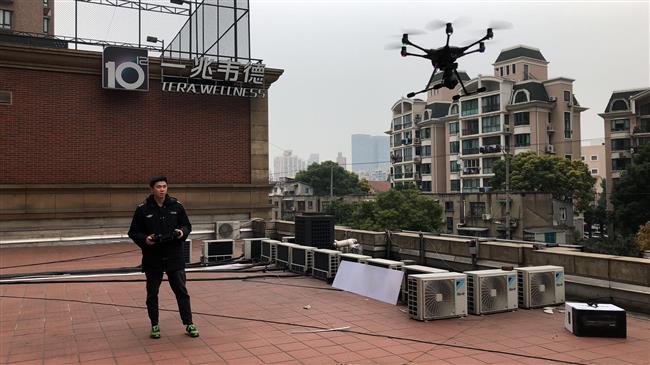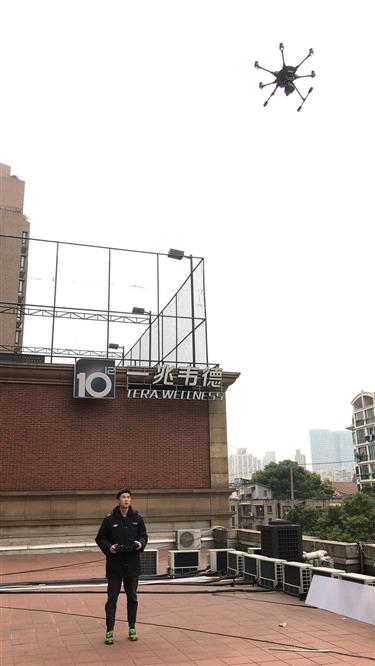Drones help environmental law enforcement in downtown Shanghai
The environment law enforcement agency in Shanghai's downtown area has started using drones to cover what is referred to as “blind zone.” However, safety remains as priority despite the use of drones, officials said.
Hongkou District environment law enforcement team used drones for the first time last month to collect evidence after receiving tip offs from residents about a restaurant allegedly discharging waste gas.
“The vent of the restaurant was located on the roof of a building, which is a blind zone,” Tang Xun, head of Hongkou District environment law enforcement team, told Shanghai Daily yesterday. “It would be too difficult for our staff to climb up that high and collect evidence, so we decided to use a drone.”
With the help of the drone, environment team staff shot videos and took pictures around the restaurant vent on Bao’an Road on December 7, which helped in ensuing investigation.

A member of Hongkou District environment team remote controls the drone used to collect evidence on a restaurant which was accused of discharging waste gas.

Hongkou District environment team uses drone to take videos and pictures around the restaurant vent on Bao’an Road on December 7.
“Apart from reaching blind zones, a drone can also help when our staff encounters any challenge preventing them reaching the scene during evidence collection process,” said Tang. However, drones are not frequently used in downtown area law enforcement due to safety concerns. Therefore, it involves a strict and lengthy approval procedure.
The process mainly evaluates whether it’s necessary and suitable to use a drone in a given case, Tang said. They cannot use them above an area with a high residential density, especially under haze or heavy rain. An approval from aviation control bureau is needed before sending the drones to a location.
It also takes about one year for a user to acquire the necessary certificate to operate a drone after receiving trainings. Hongkou District environment law enforcement team currently has two staff members who are certificate holders.
Shanghai Environmental Protection Bureau made drones available for environment law enforcement teams' use about three years ago. They used to be employed mostly for operations in suburban areas where more polluting factories are located. The relatively low residential density in those areas also mitigated safety concerns during the drone operations.
“We are still in an experimental period as far as the use of drones is concerned. It currently serves as a supplementary tool in our law enforcement,” added Tang.















